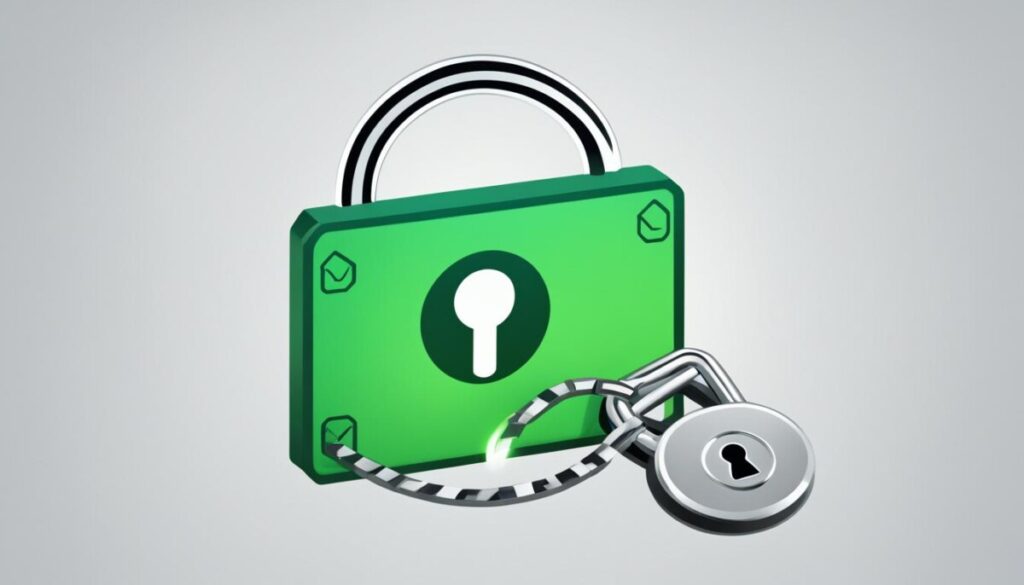Have you ever wondered if it is possible to view saved passwords on your hard drive in the Google Chrome browser? In the past, it was indeed possible, but recent updates have made it more secure. Let’s explore how Chrome’s password management system works and how you can keep your login information safe.
Key Takeaways:
- Chrome now encrypts password data, making it inaccessible to view directly on the hard drive.
- You can still manage your saved passwords within the Chrome browser.
- If you need to backup your saved passwords in Chrome, you can locate and copy the “Login Data” file.
- Regularly reviewing and deleting saved passwords is essential, especially on shared or public computers.
- Consider using dedicated password management tools for increased security and convenience.
Managing Chrome Passwords
Although Chrome passwords cannot be viewed directly on the hard drive anymore, users can still manage their saved login information within the Chrome browser.
To access and manage passwords, follow these steps:
- Open Chrome and click on the wrench icon in the top-right corner.
- From the dropdown menu, select “Options”.
- Navigate to the “Personal Stuff” tab.
- Scroll down to the “Passwords” section.
- Click on “Managed saved passwords…”
This will display all the passwords that Chrome has saved.
You can now easily manage your passwords, whether it’s deleting specific ones or editing them as needed.
In addition to the steps mentioned above, you can use the search function within the password manager to quickly find specific passwords.
Deleting passwords is as simple as clicking on the “X” next to each one.
“By managing your Chrome passwords, you can have better control over your login information and enhance the security of your accounts.”
| Benefits of Managing Chrome Passwords | How It Helps |
|---|---|
| Enhances Security | Allows you to regularly update and delete saved passwords, preventing unauthorized access. |
| Convenience | Quickly access saved passwords without the need to remember or type them in. |
| Efficiency | Saves time by automatically filling in login information on websites. |
| Password Organization | Provides a centralized location for all saved passwords, making them easy to manage and find. |
Remember to regularly review and update your passwords, especially if they have been compromised or if you suspect any unauthorized access.
By managing your Chrome passwords, you can ensure the security of your accounts and protect your sensitive information from potential threats.
Backing up Chrome Saved Passwords
If you’re looking to backup your saved passwords in the Chrome browser, you’re in luck! There is a simple way to do it by locating the “Login Data” file in the Chrome AppData folder on your computer.
The default location for the “Login Data” file is usually C:\Users\[yourusername]\AppData\Local\Google\Chrome\User Data\Default. Once you find this file, you can copy it to another location, such as your desktop or a thumb drive, to create a backup.
If for any reason you need to restore your saved passwords, the process is also straightforward. Simply rename the backup file to “Login Data” and copy it back into the AppData folder, overwriting the existing file. This will replace any saved passwords on the current installation with the ones from the backup.
Backing up your Chrome saved passwords is crucial for keeping your login credentials secure and readily accessible. By creating a backup, you can prevent any potential loss of data and ensure peace of mind.

Remember to maintain the security and confidentiality of your backup file. Treat it like any other sensitive data and store it in a secure location or password-protected device.
Now that you know how to backup your Chrome saved passwords, you can take proactive steps to safeguard your valuable login information.
Conclusion
In conclusion, the Google Chrome browser has implemented encryption changes that prevent the direct viewing of saved passwords on the hard drive. However, users can still manage their login information within the browser itself.
To ensure the security of your accounts, it is recommended to regularly review and delete saved passwords, especially when using shared or public computers.
Furthermore, it is crucial to back up your Chrome passwords in order to avoid any potential loss of access. By locating and copying the “Login Data” file to a secure location, you can safeguard your login credentials.
For enhanced security and convenience, consider utilizing dedicated password management tools that can securely store and encrypt your login information across multiple devices. With these measures in place, you can confidently browse the web, knowing that your passwords are protected.
FAQ
Can Chrome passwords be viewed on the hard drive?
No, with recent updates, Chrome encrypts password data, making it inaccessible to view directly on the hard drive.
How can I manage my Chrome passwords?
To manage Chrome passwords, open the browser, click on the wrench icon in the top-right corner, select “Options” from the dropdown menu, navigate to the “Personal Stuff” tab, and scroll down to the “Passwords” section. Click on “Managed saved passwords…” to display all the passwords saved by Chrome. Individual passwords can be deleted by clicking on the “X” next to each one.
Is it possible to backup Chrome saved passwords?
Yes, you can backup Chrome saved passwords by locating the “Login Data” file in the Chrome AppData folder on your computer. The default location is usually C:\Users\[yourusername]\AppData\Local\Google\Chrome\User Data\Default. Copy the file to another location, such as your desktop or a thumb drive, to create a backup. If you need to restore your saved passwords, rename the backup file to “Login Data” and copy it back into the AppData folder, overwriting the existing file.

